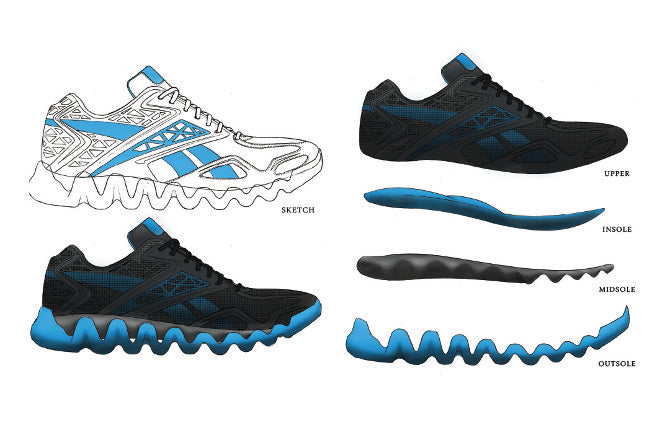
Anatomy of Athletic Shoes
Share
Athletic shoes are considered to be a part of athlete’s gear which are designed and built for a high performance to provide sports-specific level of flexibility, cushioning, stability and durability. These running shoes have different shapes ranging from curves to straight, which makes the shoes appropriate for the different foot shape runners. The structure of these shoes are manufactured to meet the demands of bearing four to five times the body’s weight. The ultimate goal of a well-designed running shoe is to experience an injury-free and comfortable running for longer period.
There are many runner who are not able to identify the right type of shoes because they are not aware of what foot type they have. So, it is very important to know the bio mechanics of the shoes which eventually helps the runner to choose the right shoe type.
Here, are various different sections which describes the components of the shoe along with the significance for choosing the right shoe for the runner. The emphasis of knowing the foot type, shape and bio mechanics of every individual determines what is best when it comes to shoes.

Component of the athletic shoes:
- Upper: The upper portion of the shoes is made of various fabrics sewed or glued together or it is even made of single piece of material for e.g. mesh which helps for breath ability, comfort and weight loss. This also protect the foot and makes it comfortable for running.3

- Tongue: Tongue is attached in between shoe lace and eyelets. The padded portion attached to the tongue is for the extra comfort and this also prevents the lace from rubbing against the foot. The tongue helps the laces to remain still because uneven laces leads to uneven pressure on the tongue which can cause imbalance on the foot.

- Insole: The insole holds the entire body weight and gives the support while running. The insole can be removed and new stock liner can be replaced as per the requirements. This provides the cushioning to the feet and absorbs the moisture.

- Heel: Heel is at the back side of the shoe which provides the stability to the shoe. This also helps in cushioning the ankle and ensure the fit is proper. The cushion attached to the heel is for extra comfort for the foot and arch. It helps to maintain the grip of the shoe while running.

- Toe Box: The toe box is the round front part of the shoe which provides support to the foot while running. The movement of the toe box depends on the lacing system and the eyelets and it’s very important for runners to make sure eyelets are tied in systematic manner which provides optimal stability while running.

- Sole: Sole is the heart of the shoe. The sole is the part of the shoe which provides the stability and is the key in lifespan of the shoe. High quality sole of the shoes are made of quality raw material to ensure that they last longer and are comfortable while walking or running.

Summary
The importance of knowing the structure of the shoe for running is that it should give you extra comfort and lining while running or walking. While purchasing the shoes make sure that it should be neither too long nor too short, or it should not be too wide or too narrow. Apart from this always ensure to wear the shoes in the store and walk to know the stability and comfort zone while walking because if the fit doesn’t works in the store then it is not going to work on road or tracks.
This article is written by Aashana Shah - TRUEREVO editorial team. TRUEREVO is an award-winning functional sportswear brand that makes unique products for men & women focused on running, training & sports. Check it out at https://truerevo.in/